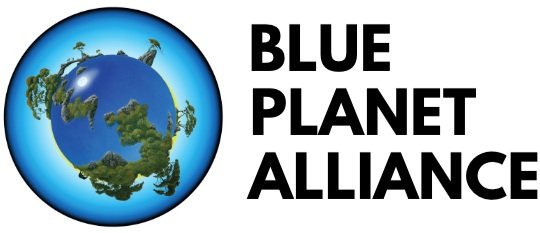Rainfall Education
By Alyssa K., Blue Planet Alliance Global Ambassador from USA
Coastal cities and island nations are particularly vulnerable to changes in climate and extreme weather patterns. However, flash floods pose a distinctive threat, with rapid waters leaving local communities unprepared for such a sudden flood. It can be difficult to evacuate all members safely, leading to property damage and even loss of life. In cities, flash floods from extreme rainfall — known as pluvial flooding — can be devastating. In 2021, Hurricane Ida led to 14 deaths in New York City, 11 of which were drownings that occurred in basement apartments.
However, these devastating effects can be prevented and managed — if there were a way to better assess areas with greater flood risk, especially in densely populated cities. Such information can aid future evacuation plans and urban design. It may also benefit the installation of new infrastructure or improve existing stormwater systems.
Taking Action
To do so, we’re introducing a new initiative: Community Action for Rainfall Education, otherwise known as CARE. At CARE, our mission is to inform more people of the threat of pluvial flooding, especially as climate change progresses, disrupting typical weather patterns. We hope to be able to engage with local communities, such as the Sunset Park neighborhood in Brooklyn, which has been a community greatly impacted by pluvial flooding. One of our goals is to create a resource, such as a pamphlet, which can educate families about the different ways that they can protect themselves in the case of a flash flood, and how they should prepare in the case of a storm warning. By creating more accessible information and resources, we hope to prevent future property damage or fatalities.
However, we also hope to be able to build a model that will inform people of the risk of their homes being affected in cases of such a flood. To do so, we will be employing citizen science, which calls on residents of NYC to report incidents of street flooding or any home flooding that they may observe via a Google Form. This form will be anonymized and will have a few simple questions. The most important of these questions is the location of the flood. With the address, we can then generate the GPS coordinates of the specific instance of flooding, which we can then use to create a map using all these reports. We hope to continually update the map, and make it accessible to all viewers. This will help inform specific families or blocks that they should be more prepared for heavy rainstorms.
Rainwater Harvesting Systems (RHS)
In the future, one of our biggest goals is to take action and prevent pluvial floods by installing Rainwater Harvesting Systems (RHS), such as rain barrels. By installing such infrastructure, we would be able to collect precipitation and offload the stress put on the stormwater system during storms. The NYC Department of Environmental Protection and the Mayor's Office of Sustainability already have goals to install more RHS but are not taking direct action. We believe that by working with local communities to install RHS in nearby gardens or zones with a high risk of flood, we would be able to more actively warn residents of the dangers of pluvial flooding while showing them that, with proper intervention, they can protect themselves. While installing RHS we hope to be able to work with local elementary schools, as well, having them decorate these rain barrels to create a learning experience that they otherwise would not have a chance to interact with.
While the NYC Department of Environmental Protection offers to distribute rain barrels for free, it can be challenging for homeowners to reach out to their local representative and find out where they can obtain such rain barrels. Furthermore, they are left to their own devices to set up the rain barrel, which can be difficult and time-consuming. This is why we hope to be able to make it easier to access a rain barrel and then help communities install an RHS, which would be able to benefit many.
Harvested water could be repurposed into car washes, a station for people to rinse their hands, or used as garden water. With a filter, rainwater could also be repurposed as drinking water. There are so many possibilities for rainwater use and it is a valuable resource that we have yet to, well, “tap” into.
Flood awareness is crucial, and we hope to spread the message. We will be continuing to post information on how you can protect yourself in the case of a flash flood on Instagram, and we hope to start distributing pamphlets to local libraries. Education should be accessible to all and is a core pillar of our mission.
If you have any questions, please don't hesitate to contact us via email (pluvialcare@gmail.com) or DM us through Instagram! Finally, if you are interested in our work, please follow our Instagram page: @pluvialcare.



